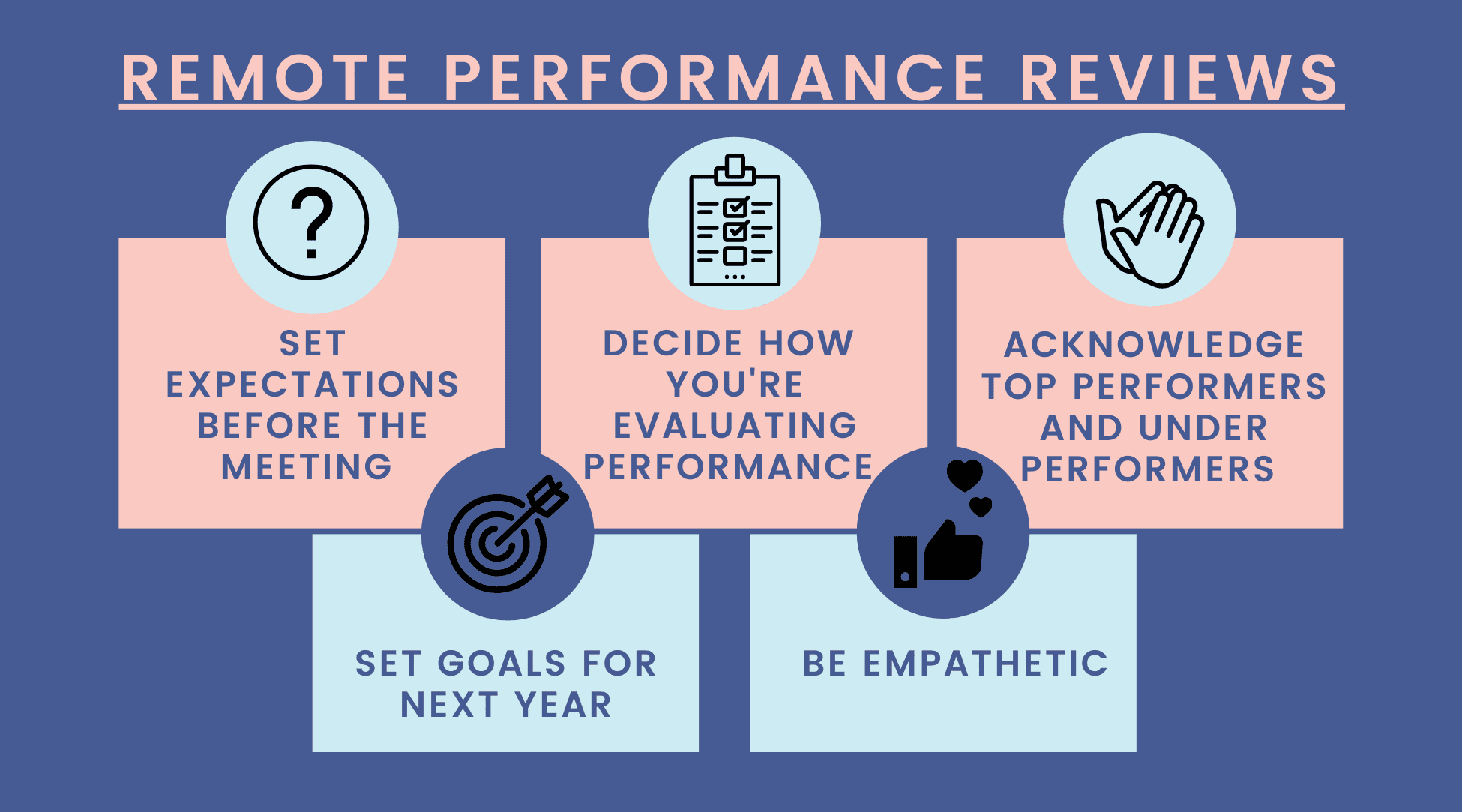It’s surreal to think that it’s been almost an entire year since COVID swept the globe, causing organizations to shift to remote work. As we wrap up the last couple of months of 2020, employers need to start thinking about how they will approach and structure this year’s employee performance reviews in the era of COVID.
Conducting remote performance reviews are just another challenge employers need to plan for. To help make these nerve-wracking and stressful meetings run more smoothly during an already tense time, follow these recommended tips.
Set Expectations
First things first, be clear as to where and how performance reviews will be conducted. If your office is fully-remote, your meetings will obviously be held virtually. If you’re working on-site part-time or full-time, decide if your meeting will be conducted via video conferencing or (socially distanced) face-to-face. Put your employees’ nerves at ease by being direct about how the meeting will be held.
Evaluating performance during a crisis
Since most goals and organization objectives have been shifted or unachievable due to the pandemic, think about how you plan on evaluating an employee’s performance. Are you assessing their performance pre-covid, during covid, or their performance throughout the entire year? How did the employee react to the crisis? How has their work been affected? How are their communication skills? Your evaluation can include any new competencies they gained, their overall attitude, collaboration skills, or their ability to adapt to remote work. Take time to think about what topics you want to touch upon during the review.
Top performers and underperformers
During these uncertain times, it’s important to acknowledge top performers who deserve recognition for their work. Providing positive feedback to the employee lets them know their efforts are appreciated, and in the end, it will increase morale and retention. If raises aren’t in the budget right now, explain that to them and give them an idea of when a raise might be possible for the future. If you can offer any perk – a bonus, extra PTO days, or transportation stipend – let them know what they will be receiving.
For those who underperformed, explain where they can improve and together, come up with a plan on how to tackle these challenges. Keep in mind, during these stressful times, it might take time for employees to get back on track and prove they are still capable of doing a good job.
Moving forward
After evaluating one’s performance over the past year, talk about what success looks like for them in the future. What are their goals moving forward and how can they continue to adapt to today’s new workplace norms? This meeting is the perfect time to be completely transparent about the organization’s goals for the coming year and how they fit into those plans. Offer advice and recommendations on how they can improve and how they can best succeed being part of the organization.
Be human
At the end of the day remember that this year was difficult for everyone. We all faced many different challenges in our personal and professional lives. As a leader, be empathetic and understanding of each of your employees’ situations. When wrapping up your meeting and after providing your feedback, end on a positive note. You want your employees to leave feeling confident in their role and what they have accomplished. Ending the meeting on a high note will boost employee morale and productivity and leave the individual feeling motivated and eager to take on 2021.
When delivering annual performance reviews this year, whether it’s virtual or in the office, the best thing you can do as a leader is to be supportive, empathic, and transparent. To ensure a well-conducted meeting that will benefit everyone involved, follow this advice.
Looking for more on advice on your organization can succeed? Subscribe to The JOHNLEONARD Blog!


